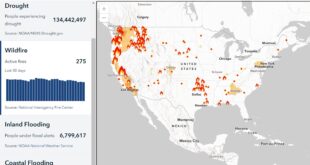 The article NASA and Hurricanes: Five Fast Facts by Katy Mersmann (6/1/2021) has the answers.
The article NASA and Hurricanes: Five Fast Facts by Katy Mersmann (6/1/2021) has the answers.
The 2021 Atlantic hurricane season starts today, June 1. Our colleagues at NOAA are predicting another active season, with an above average number of named storms. At NASA, we’re developing new technology and missions to study storm formation and impacts, including ways to understand Earth as a system.
The third fact:
Climate change is likely causing storms to behave differently. One change is in how storms intensify: More storms are increasing in strength quickly, a process called rapid intensification, where hurricane wind speeds increase by 35 mph (or more) in just 24 hours.
In 2020, a record-tying nine storms rapidly intensified. These quick changes in storm strength can leave communities in their path without time to properly prepare.
Researchers at NASA JPL developed a machine learning model that could more accurately detect rapidly intensifying storms.
There are fantastic images (such as the one copied here – incorporate it into a Calc III course?) and short videos. Climate.gov has a starting point for hurricane data: Historical Hurricane Tracks – GIS Map Viewer. A past post on hurricanes: Are hurricanes lingering near the coast longer?
